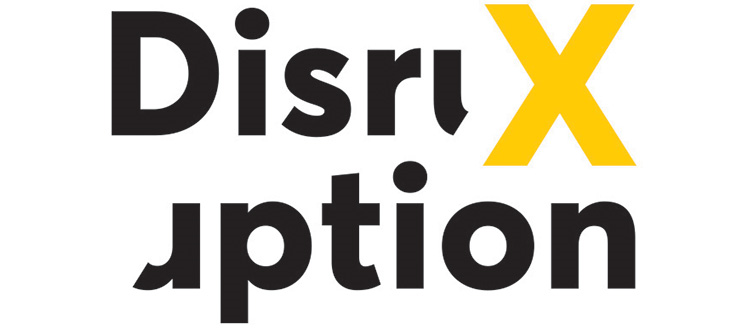Fresh from TBWA’s global agency conference in Rome, CEO Troy Ruhanen arrived in Singapore last month with a new sense of priorities and purpose.
Whereas the past two years have been about coping as a business and helping others cope, 2023 will be measured through output, he tells Campaign. Much had already been done within the agency over the past year to change its ways of working, improve cultural intelligence and align on new methodologies, he explains. And although that effort is starting to pay dividends through more effective work, the bar for results still needs to be raised.
“I need to see the industry transform to work that’s making an impact. It's got to change. This next year, output has to be king and impact has to be obvious,” he says.
To be clear, when Ruhanen, talks about ‘output’, he alludes to a very different kind of work for TBWA than past advertising or creative communications. No longer content with business survival through campaign help, Ruhanen says clients are hungrier for partners who can bring new strategies and innovation to reach their next stage of growth, particularly in a tougher consumer economy.
“If you lean into disruption, you’re looking for how I really drive growth, not ‘how does my advertising stand out’ or ‘how does my social commerce platform look different’,” Ruhanen says of top client concerns.
The next phase of ‘disruption’
While TBWA has long branded itself as the ‘disruption company’, the mantra had begun to feel stale in a post-Covid world. Disruption, for too long, meant creating a digital version of a traditional product or service that was simply more user-friendly. But when all companies were forced to improve their digital offerings during the pandemic, the word seems to have become less relevant.
So during the pandemic, the agency set about redefining ‘disruption’ internally, creating a new ‘Disruption X’ methodology, much like a systems upgrade. No fewer than 11,000 employees were ‘retrained’ on this methodology globally through eight different modules that focused on changing customer experience and creating value through many diffent touchpoints.

“For me, that was a watershed moment for our company where we could see the difference between where we’ve been from ‘disruption’ being thought of as a communication platform to being more of a business partner looking where growth can come from,” Ruhanen says, arguing too many other agencies remain overdependent on communications alone.
TBWA lexicon
Fond of “deleting language”, Ruhanen differentiates TBWA and its new objectives from competitors by rejecting a series of terms and definitions that describe agencies in ways he doesn’t like. The term ‘network’, for one, connotates a group offices and reporting structures, which is why TBWA has opted to call itself a ‘collective’ “which is more about being able to access and orchestrate 11,000 minds."
Clients don’t merely want ‘integration’ from business partners, Ruhanen maintains, but want help to achieve a full ‘orchestration’ of their business outcomes. When it’s suggested that his descriptions of TBWA work sound more like consulting, he relates how the agency has been described by analysts as a ‘consultant caught in a creative body’. “I don’t mind that,” Ruhanen says, noting how the term ‘advertising agency’ fails to reflect their total output.
But just don’t get Ruhanen started on ‘client service’, which is far too reactive a term for the type of proactive disruption the network collective espouses. “Be ahead of the client,” Ruhanen says, “able to impact anywhere up and down their customer journey. That is exciting because then there are many more places where we can have creative impact.”
A key role for Asia
This need to stay ahead, Ruhanen says, is why he’s particularly excited to be visiting Asia, since he feels the work from the region has been pushing more boundaries in areas like social commerce and web3.
“There is an openness in terms of consumer behaviour but also an agency environment to push beyond the regular. I really do feel like Asia is helping us lead that,” Ruhanen says, referencing teams in Hong Kong and Singapore with the help of innovation head Tessa Conrad and APAC CEO Sean Donovan.
He points to their work on Altava Group, an international metaverse pureplay which he says has been a “beacon” for the agency in bringing its global teams together virtually to tackle next generation work collectively, instead of assigning it to a specialist team as might happen in the US.
“Creativity is going to be defined in many different ways as part of web3 and I do believe that Asia is further ahead than most,” Ruhanen says. And while sometimes the quality of work in certain Asian markets is playing catch up with others globally, especially in terms of design, Ruhanen sees that gap closing which he sees as a huge opportunity ahead.
Design has always been centrally important to TBWA, stemming from its 30-year relationship with Apple through Media Arts Lab. Ruhanen sees design as a critical thread that connects a company’s strategy and creativity in a way that’s more visible, concrete and consistent than transient marketing campaigns.
While some TBWA offices, like its joint venture with Hakuhodo in Japan, have always been leaders in design, Ruhanen is aware how design culture is catching up quickly in China, with ‘demonstratable progress’ in the quality of work coming from its MAL, TBWA, Bolt and Juice agencies there. (The below Chinese New Year convention-busting work from Bolt for BMW is one of his favourites).
“I feel as though Asia is grasping design both in an absolute sense but also in a modern way that’s going to become really important,” Ruhanen says. To illustrate, he notes how food delivery and ride-hailing apps in Asia all look and work similarly but scream for differentiation and still have more untapped commerce and service potential. It’s this kind of design-led future-focused work where TBWA’s CEO feels the next opportunities lie.
And because the pandemic has made clients much more open to accessing talent from Asia and working virtually as a collective, Ruhanen sees more scope for Asian contributions in its global ‘output’, specialist work and data analysis.
During the pandemic, TBWA decided to house its data strategy hub in Singapore, which is growing rapidly, from serving eight global markets in 2022 to an additional thirteen markets in 2023. Ruhanen also sees more support for US work, for instance, coming out of places like India and Mexico, traditional outsourcing destinations once tapped purely for cost effectiveness which now have developed knowledge specialisms to provide “better minds at better value.”
Ruhanen says not only are clients more open to analytical work done elsewhere, but TBWA’s internal culture is more open to it as well.
Generating business
While it’s easy to talk about aligning with clients’ real business needs now and into the future, the big question is whether it’s working for TBWA amid competition between other agencies and consultancies in potentially more desperate economic circumstances.
Ruhanen says the agency had its most successful year of business growth in 2021 as clients sought help to transform their businesses and this year will mark its second highest year of growth. And while they perform some similar work to consultancies, the latter tend to earn more work by referral but are less adept at winning pitches, he claims. Meanwhile, only a minority of ad agencies have similarly repositioned themselves as true client business partners to help companies find growth, Ruhanen says.
But external factors are still a big challenge and wild card, Ruhanen admits. There was an almost unprecedented slowdown in late summer, he says, when their new business pipeline dried up by about 40% before rebounding in October to completely swing the other way.
Here in Asia, TBWA could still use another big client or two after it opted not to participate in the Singapore Tourism Board’s global creative and media review a year ago. Anticipating that the contract would inevitably be rotated to a new agency partner as had been the practice, TBWA opted to sit out on this year’s review, eventually won by Publicis Groupe in January. But Ruhanen says they’ll be back to pitch hard for the contract when it’s reviewed again, since they remain staunchly proud of their STB work and are confident of their track-record with the client.
Then there’s SCB, or Standard Chartered Bank, which parted ways with TBWA this summer (again to Publicis) after 18 years of work that involved conceptualising the bank’s 'Here for Good' ethos. “That really hurt,” Ruhanen admits. “It still hurts because we did some fantastic work there.”
In fact, so confident is TBWA in its work for SCB, that Ruhanen vows the agency plans “to do everything we can to succeed in the financial market” in Asia, including pursuing more local or regional banks to work with.
So while the collective could take on more business here, it’s more a matter of pride than necessity. “We’re fine financially,” Ruhanen says. “But emotionally we’re not fine.”
(This article first appeared on Campaign Asia-Pacific)







.jpg&h=334&w=500&q=100&v=20170226&c=1)







.jpg&h=334&w=500&q=100&v=20170226&c=1)





.jpg&h=268&w=401&q=100&v=20170226&c=1)
.jpg&h=268&w=401&q=100&v=20170226&c=1)

.jpg&h=268&w=401&q=100&v=20170226&c=1)
